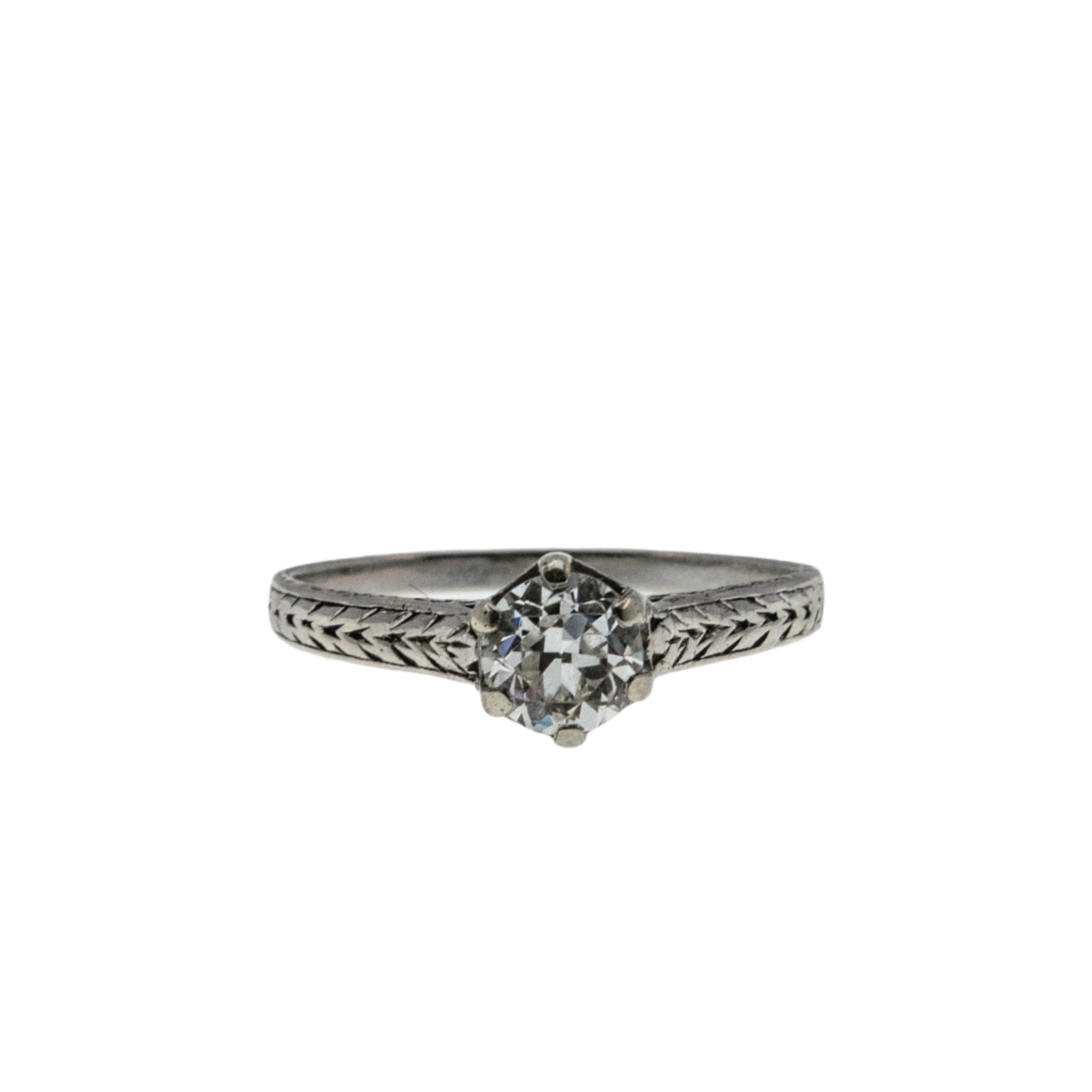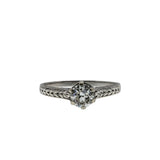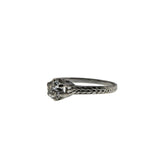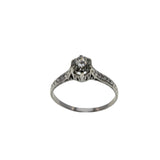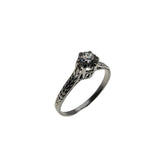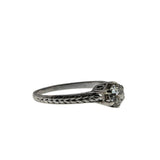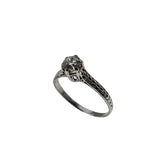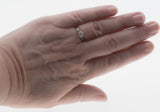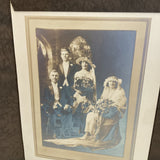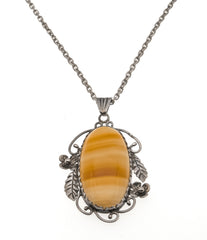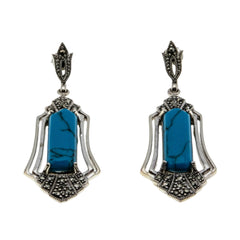An Heirloom Proposal - Art Deco Platinum Natural 'Old European Cut' Diamond Solitaire Engraved Engagement Ring (ADR284)
Rarities Antique Jewelry
An Heirloom Proposal - Art Deco Platinum Natural 'Old European Cut' Diamond Solitaire Engraved Engagement Ring. This antique ring is crafted from platinum, tested and confirmed. The ring features one natural Old European Cut diamond, Art Deco era styling, and quality craftsmanship. The gallery on this precious ring is expertly claw-set with a beautiful sparkling antique cut diamond. The claws are and substantial, which hold the diamond tightly and securely. The setting is decorative and hand-made, displaying wonderful open-work. The band is engraved with an exquisite wheat pattern, which symbolizes wealth, prosperity, and abundance. It has a history rooted in the agricultural world, where farmer's wives wore such rings to signify a successful harvest. Additionally wheat, can also represent eternal love or everlasting love, particularly in the context of wedding rings. The band features this exquisite pattern all the way around the band, however sizing can still be easily done. This Art Deco era ring is a bespoke heirloom ring, which was custom-made for a young lady who lived in New York. This rare ring would make a very special engagement ring for that special someone.
Comments: Rare find, and wonderful high quality diamond. Great history on this ring in regards to the provenance. Read below and see photo.
Note: Appraisal included with the ring. Contemporary appraisals do not reflect the value of antique jewelry.
History: The earliest diamonds were found in India in 4th century BC, although the youngest of these deposits were formed 900 million years ago. A majority of these early stones were transported along the network of trade routes that connected India and China, commonly known as the Silk Road.
The Old European Cut, a historic diamond cut, evolved in Europe and gained popularity between 1890 and 1930, serving as a precursor to the modern Round Brilliant cut. It's characterized by its round shape, high crown, and a small table, offering a unique charm due to being hand-cut. This cut was especially popular during the Edwardian and Art Deco periods.
In 1953, GIA formally created its diamond grading system, known as the 4 C's. The 4 Cs of diamond quality are the universally recognized diamond grading system still to be used today. 1n 1955, GIA presented its first diamond grading reports, which became the hallmark of grading reports in the diamond industry. Before this time in antiquity clients did not care about diamond grading. It was based more so on the size of the diamonds (according to budget) , style, and sentiment. This ring is a wonderful example of the Art Deco era, just beautiful!
Gold was generally used for a couple thousand years solely to create things such as jewelry and idols for worship. This was until around 1500 BC when the ancient empire of Egypt, which benefited greatly from its gold-bearing region, Nubia, made gold the first official medium of exchange for international trade.
Although the origin of white color gold dates back to 1710, where it was discovered by two alchemists in Germany, it wasn't used widely until much later. White gold as we know it today was really popularised in the 1920s. Although it might seem strange, this luxury material came to popularity in wartime.
Measurements: 6.00 mm x 6.00 mm
Stone Size: Diamond .60 carat Clarity VS2 Color H/I
Weight: 2.82 grams
Ring Size: 6 1/4
Condition: Excellent
Origin: America, New York, Long Island Provenance: America New York, Long Island. This ring belonged to Charlotte Drescher given to her by her fiancé Herbert Carl Drescher. They were married in 1925. They were both born and lived in Long Island, New York all their lives.
Date: Circa 1920

